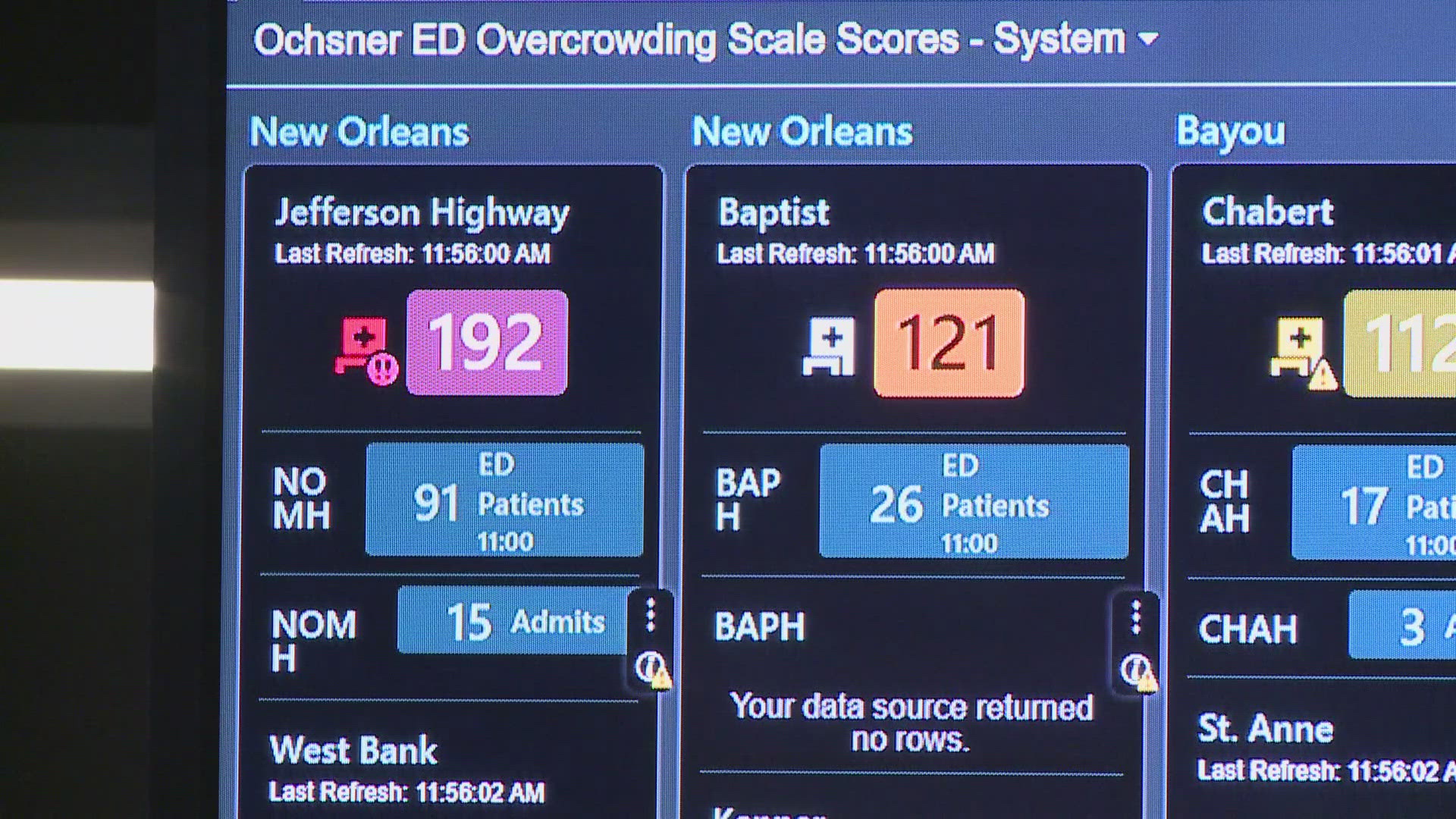METAIRIE, La. — When a hurricane is coming, we think about preparing for our family's needs.
But a hospital has thousands, who are already in need, to take care of.
With hurricane season already upon us, we get a first look inside the mission control center in Ochsner that is ready to go.
Nearly two decades ago, many of us can remember the need to evacuate patients from flooded hospitals, many after being trapped for days.
“So, this is a snapshot of our entire enterprise. Every emergency department within our system, and the amount of crowding that we have,” said emergency room physician Dr. Jeffrey Kuo, who is the System Chair of Patient Flow and EMS, and System Medical Director of Emergency Management and Security.
But today there is a whole new system in place. There is the Ochsner Patient Flow Center in Metairie. It's one of four across the state. The medical staff keeps track of nearly 30 Ochsner hospitals, and facilities, staff, number of beds open, ICU, and emergency department numbers, and the list goes on.
“We actually know, at any given moment, what services are available at every one of our facilities.”
Ochsner emergency room physician, Dr. Jeffrey Kuo, says it's used every day to move, and coordinate patients, so they get to the care, and hospital they need, but during Hurricane Ida, the staff worked 18-hour days.
“Just a few hours before landfall, the parish government of one of our parishes locally, decided to evacuate, and we had to evacuate one of our facilities, and we were able to do so in less than two hours,” he remembers.
For 24 hours a day, every single day of the year, almost 100 people on the medical staff are keeping track of 10s of thousands of patients.
They also have an emergency management team and operations center. There are hospitals with generators, fuel, and well water. They can deploy tanker trucks and high-water vehicles, deployable Wi-Fi, satellite phones, and dual SIM phones – since communication is key for those staying in place.
“Retrospectively, after storms in the past, we've stood back, and we've looked back after action, on after-action reviews, and said to ourselves what would we have done pre-patient flow center,” said Dr. Kuo.
And before the storm comes, the center coordinates moving critical patients, and the preemptive ramping up of care.
“We will increase the number of patients that are coming into our clinics. We will increase the number of elective procedures that we perform so that we can accommodate the patients' needs prior to the storm hitting.”
It’s all to avoid what patients, and those in the medical profession who care for us, dealt with on that August day in 2005.
► Get breaking news from your neighborhood delivered directly to you by downloading the new FREE WWL-TV News app now in the IOS App Store or Google Play.

